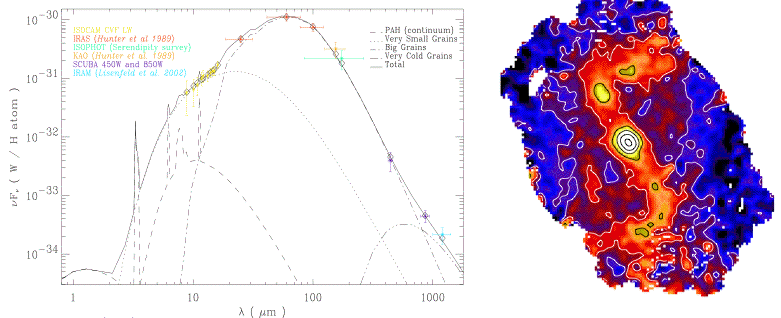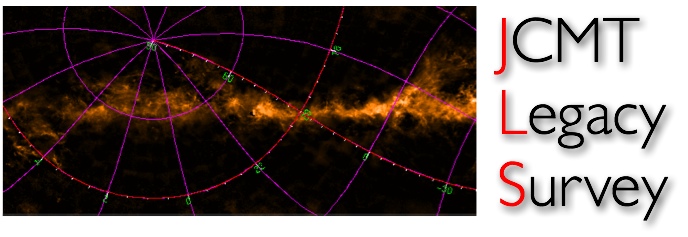JCMT Nearby Galaxies Survey
- Visit the NGLS ADS library for a list of NGLS publications
- NGLS Data can be obtained via CANFAR here.
The JCMT Nearby Galaxy Legacy Survey will produce the first large sample of nearby galaxies observed with good spatial resolution at 850 and 450 microns and in the CO J=3-2 line. We are undertaking this survey using SCUBA-2 and HARP for a sample of 155 galaxies within 25 Mpc. This data set will be unique for studying the physics of the dusty interstellar medium (ISM) in galaxies as well as the interplay between star formation and the ISM. With a large, well-selected sample, we will be able to search for variations in the physical processes in the ISM as a function of galaxy type, metallicity, star formation rate, mass, and environment. By limiting our sample to galaxies closer than 25 Mpc, we will be able to study spatial scales of 0.2-2 kpc and to search for variations inside a single galaxy as well as between galaxies. Specific science goals include:
- searching for evidence of cold dust and measuring its mass fraction in galaxies of different types;
- measuring the amount of warm, dense molecular gas associated with star formation using the CO J=3-2 line;
- comparing galaxies with similar morphologies and luminosities in the field and in the Virgo cluster to determine the effects of cluster membership;
- using CO rotation curves to trace the dark matter distribution and the frequency of occurrence of nuclear gas concentrations which may feed central starbursts or black holes;
- measuring the local submillimetre luminosity function and dust mass function to luminosities up to 100 times fainter than previous studies.
This survey will produce the first large sample of nearby galaxies observed with good spatial resolution at submillimetre wavelengths. The scientific return from this project will be a solid understanding of properties of dusty ISM in galaxies and how those properties are affected by their environment, both internal (spiral arm, metallicity) and external (galaxy morphology, cluster membership).

On the left a SED for the dwarf galaxy NGC 1569 showing weaker PAH emission than in the Galaxy and possible evidence at 850-1300 µm for a very cold dusty component (Galliano et al. 2003). On the right, a SCUBA 850 µm image of the spiral galaxy NGC 2903 (Stevens et al. 2005).
The 2-year programme
Our sample consists of two parts: 108 galaxies randomly selected from an HI flux-limited sample, plus 47 galaxies from the SINGS sample that met our selection criteria. We will make continuum maps out to D_25 at 850 and 450 µm with SCUBA-2 to probe large and/or cold dust grains that usually contain most of the dust mass. We will also obtain spectral line maps out to D_25/2 of the CO J=3-2 transition to trace molecular hydrogen gas.




